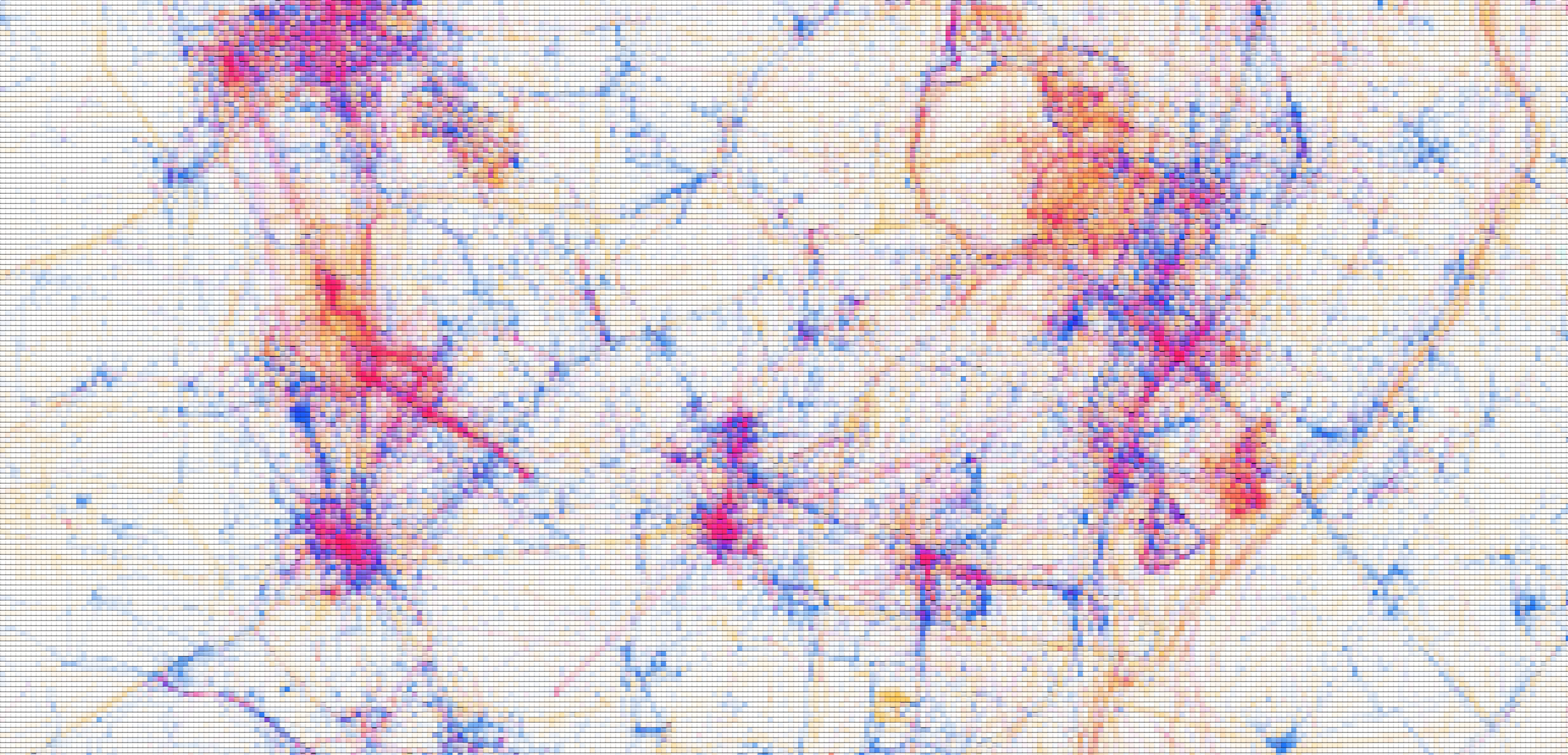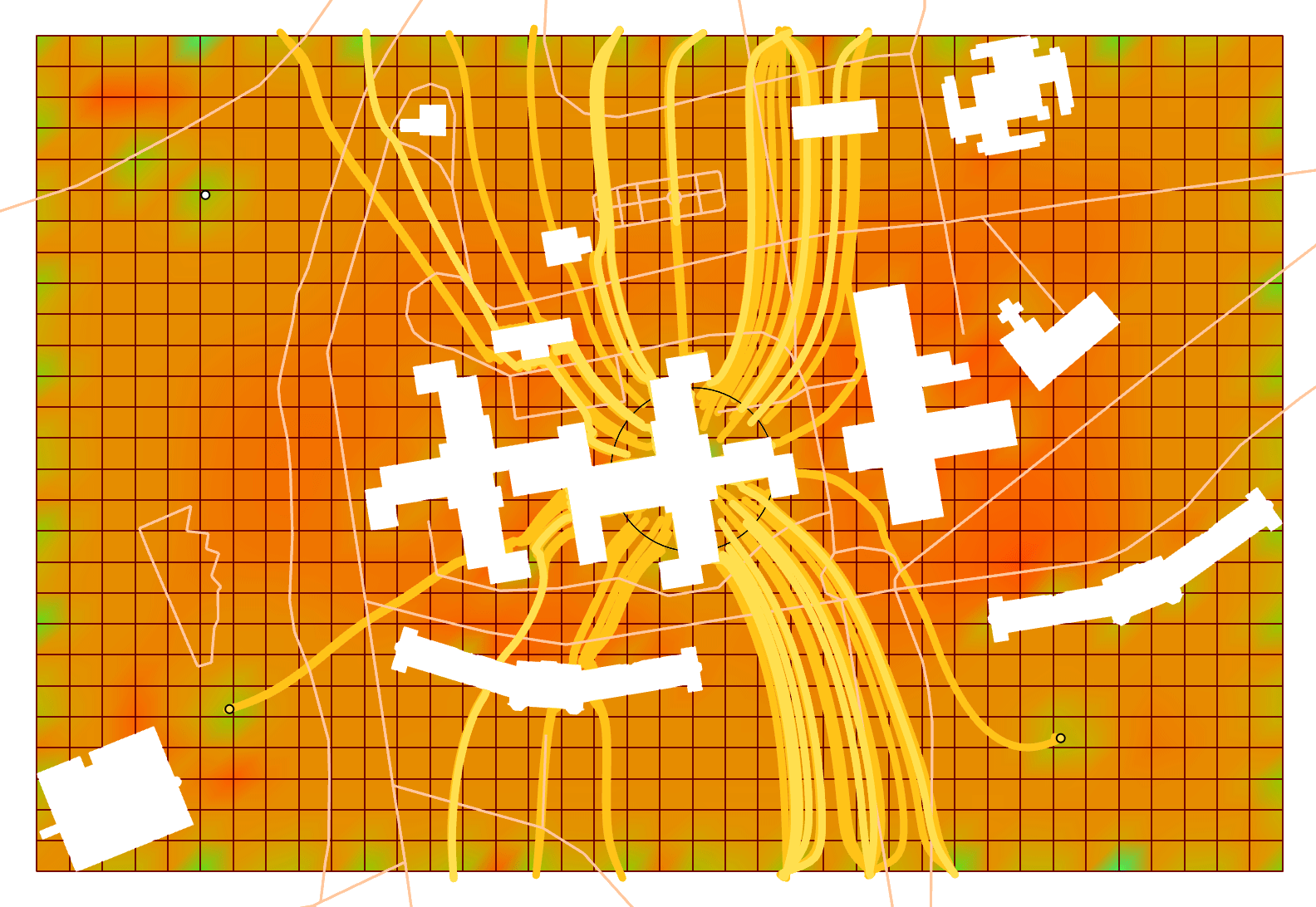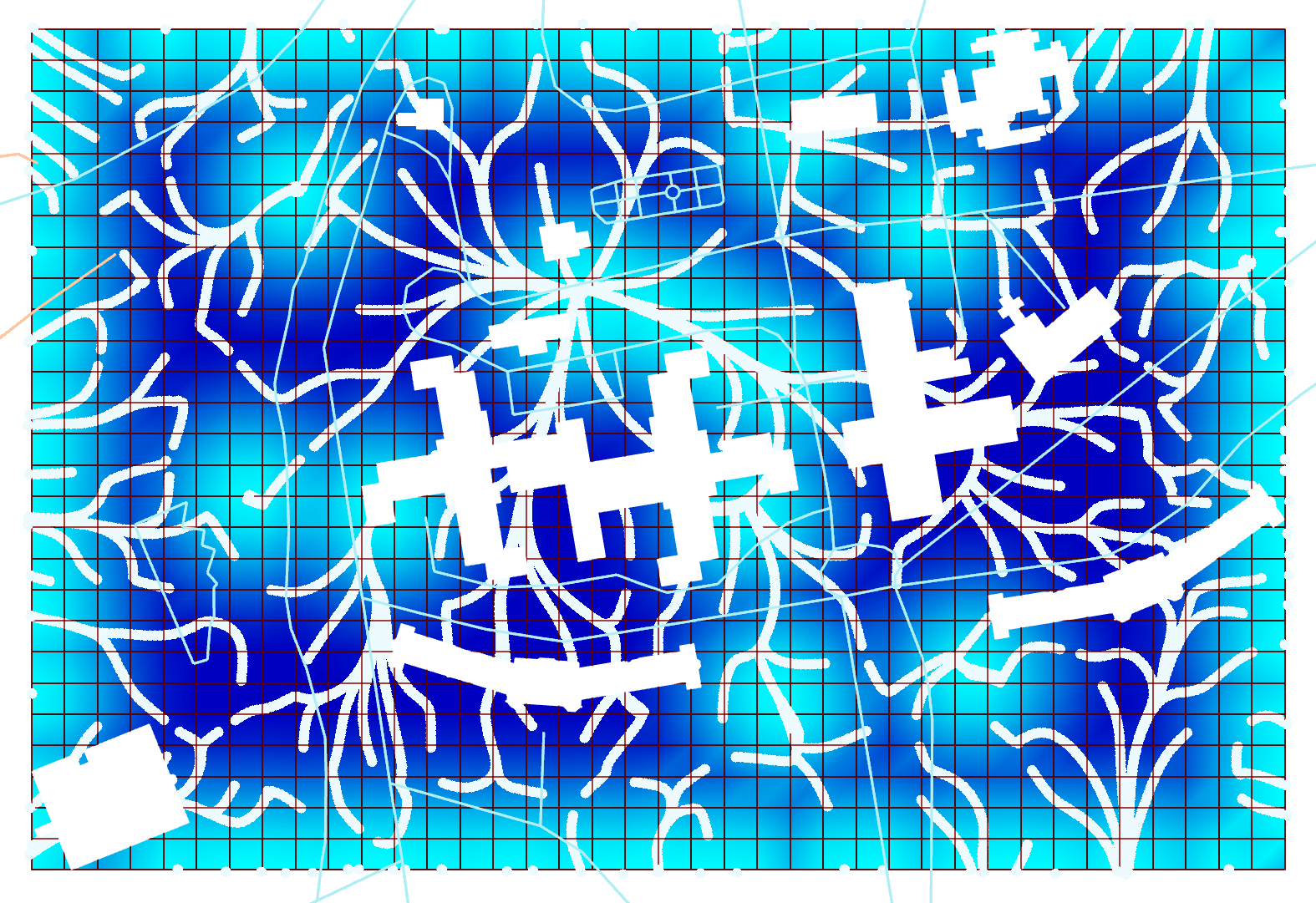
In the realm of urban design, understanding movement behaviors is paramount for creating efficient and people-centric city layouts. In this individual project, I delve into the intricacies of movement behaviors using computational tools and techniques, including agent-based modeling. By incorporating the loop evaluate field amplitude tool and employing vector display, scalar fields, heat maps, and agent-based modeling, I aim to analyze movement patterns and visualize the dynamics of urban mobility.
Analyzing Movement Dynamics:
Building upon the principles of nature of code (https://natureofcode.com/autonomous-agents) , my project focuses on how data exhibits behavior influenced by forces from both origin and destination points. One key aspect of my analysis is the creation of two distinct maps: the first map illustrates movement with a specific route, where individuals navigate through obstacles to reach their destination from a specific origin. In contrast, the second map depicts a scenario where individuals can move freely, responding to their internal behaviors and forces, to find the best way to their destination without predefined routes.


Visualizing Movement Patterns:
Vector display, scalar fields, and heat maps serve as powerful visualization tools in my analysis. Vector display enables me to illustrate the directionality of movement, showcasing the pathways and trajectories agents follow as they navigate through the city. Scalar fields provide insights into movement intensity and density, offering a nuanced perspective on high-traffic areas and pedestrian flow dynamics. Heat maps further enrich my analysis by visualizing spatial variations in movement behaviors.
Analyzing Heat Maps:
Incorporating heat maps further enriches my analysis by visualizing spatial variations in movement behaviors. By overlaying scalar field data onto geographical maps, I can identify hotspots of activity and congestion, pinpointing areas of high pedestrian movement and potential bottlenecks. Heat maps offer a dynamic representation of urban mobility patterns, facilitating informed decision-making in urban planning and design.
A pivotal aspect of my project lies in the creation of two distinct maps, each offering unique insights into urban movement dynamics. The first map serves as a visual representation of movement with a predetermined route. Here, individuals navigate through obstacles, challenges, and various urban features to reach their designated destination from a specific origin point. This visualization allows for a detailed examination of how individuals interact with their surroundings, adapting their trajectory to overcome obstacles and efficiently reach their intended endpoint.

For the second map, this will present a scenario where individuals are granted the freedom to move autonomously, responding solely to their internal behaviors and forces. Without predefined routes dictating their movement, individuals are empowered to chart their own course, dynamically adjusting their path based on real-time feedback and environmental cues. This scenario offers a glimpse into the spontaneous and unpredictable nature of urban mobility, showcasing how individuals navigate through the urban landscape in pursuit of their destination without the constraints of predetermined routes.

Probing Efficiency and Human Behavior:
Through my computational analysis, I seek to assess the efficiency of urban layouts and planned routes. By evaluating movement dynamics and heat maps, I aim to validate the effectiveness of origin-destination locations and the navigational pathways provided. Additionally, I endeavor to understand how individual agents navigate spontaneously, shedding light on human behavior and preferences in urban settings.
Conclusion
The project explores urban dynamics through computational analysis of movement behaviors with a focus on agent-based modeling. By leveraging loop evaluate field amplitude, vector display, scalar fields, heat maps, and agent-based modeling, I aim to gain insights into urban mobility patterns and inform urban planning strategies. This comprehensive approach enables me to create a more responsive and people-centric urban environment, contributing to sustainable urban development and enhancing the quality of urban life.

